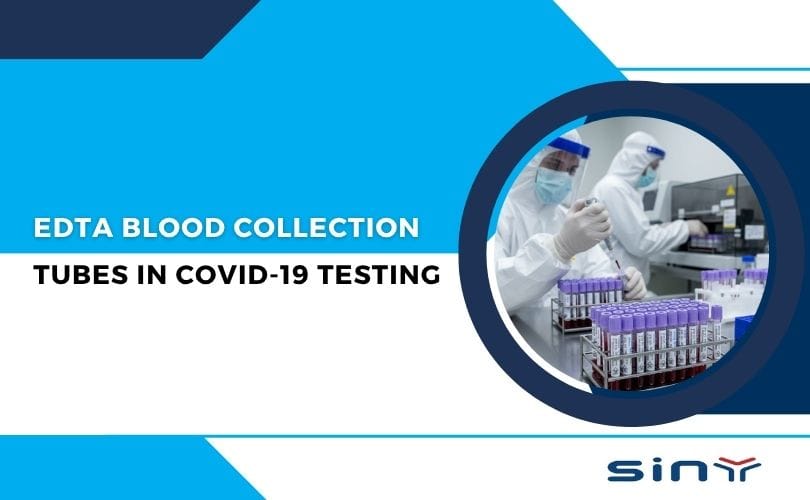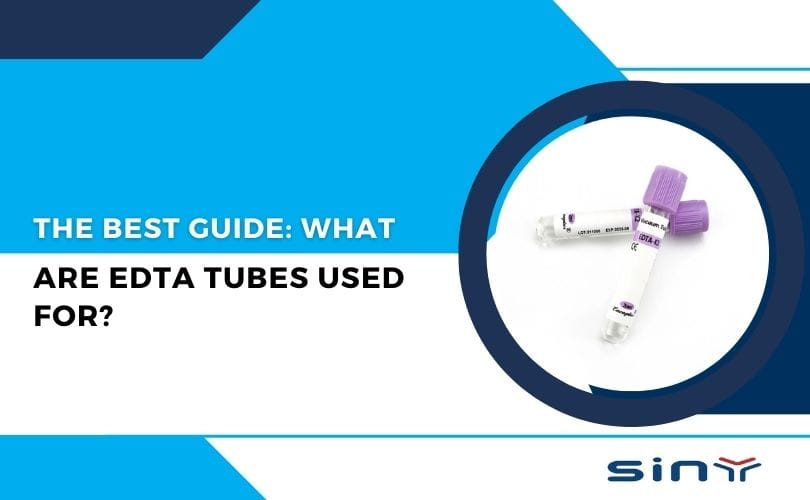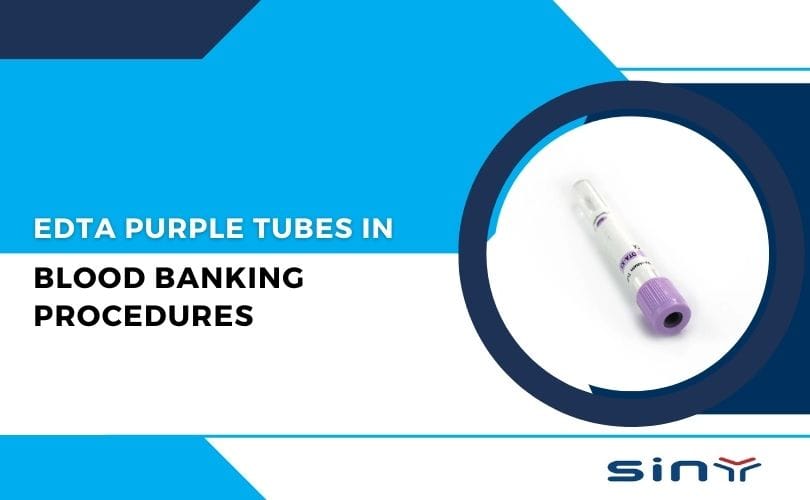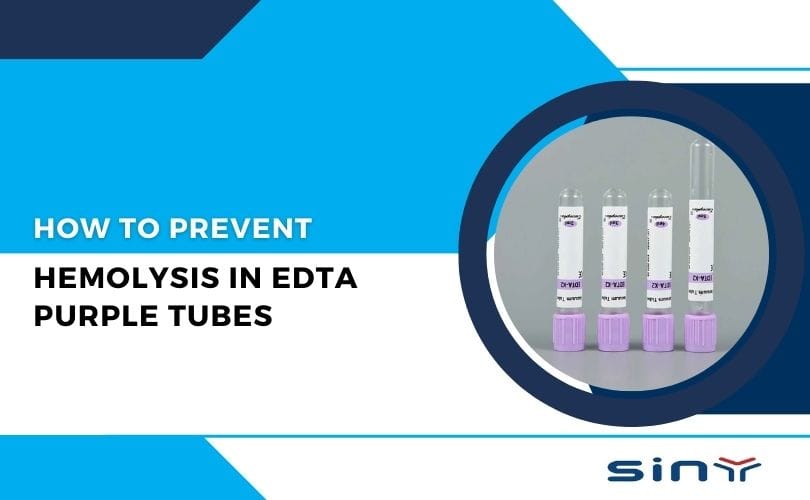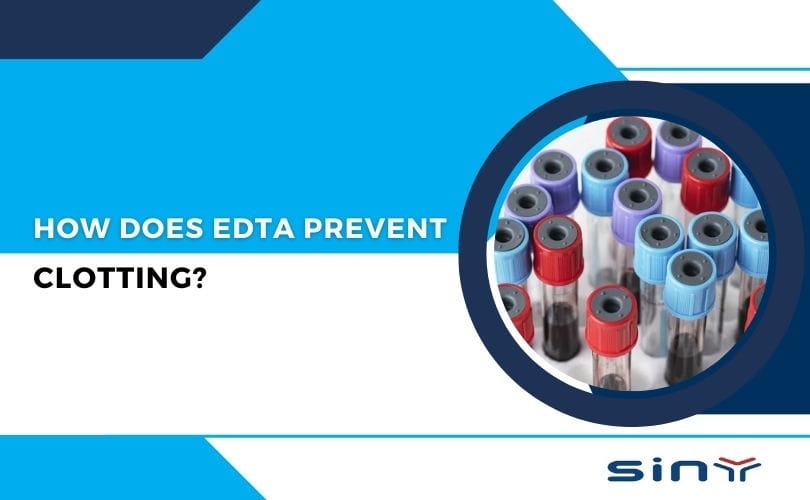The COVID-19 pandemic has reshaped the landscape of medical diagnostics, emphasizing the importance of accurate and efficient testing methods. Among the critical tools in this endeavor are EDTA blood collection tubes, which have played a pivotal role in COVID-19 testing protocols. This blog delves into the significance of these tubes, their applications, and how they contribute to the global fight against the pandemic. Whether you’re a healthcare professional or someone seeking to understand the science behind COVID-19 testing, this comprehensive guide will provide valuable insights.
What Are EDTA Blood Collection Tubes?
EDTA Blood Collection Tubes are sterile containers used for collecting and preserving whole blood samples for clinical and research analysis. Their defining feature is the anticoagulant EDTA, which keeps blood cells intact for extended periods.
Here’s how they work in simple terms:
EDTA binds to calcium, a key factor in blood clotting, effectively halting the clotting cascade.
Blood remains fluid, allowing for separation of plasma or whole blood analysis.
Ideal for hematology, molecular testing, and virology, where cellular integrity and RNA preservation are vital.
For COVID-19 testing, this was a game-changer — the accuracy of RT-PCR and antibody detection heavily depends on the quality of the sample.
You can explore product details at EDTA Tube’s Product Section or view Siny Medical’s EDTA Tube Collection.
Why EDTA Tubes Were Critical in COVID-19 Testing
During the height of the pandemic, labs relied on EDTA tubes for:
RT-PCR Tests: Viral RNA extracted from EDTA-treated plasma or whole blood maintained higher stability.
Serological Tests: Blood plasma obtained from EDTA tubes allowed for accurate antibody quantification.
Research Studies: Genetic sequencing and immune response studies depended on uncontaminated, non-coagulated samples.
According to several medical studies, EDTA tubes outperform heparin or citrate tubes in maintaining sample purity and RNA stability — two essential factors for COVID-19 viral load testing.
For example, using EDTA Tubes for Blood Collection ensured that viral RNA wasn’t degraded before testing, which was critical for early infection detection.
The Role of EDTA Tubes in COVID-19 Testing
The COVID-19 pandemic necessitated rapid and accurate diagnostic methods to identify infections and monitor disease progression. EDTA blood collection tubes have been instrumental in several aspects of COVID-19 testing:
Hematological Analysis
COVID-19 can cause significant changes in blood cell counts, including lymphopenia and thrombocytopenia. EDTA tubes are used to collect blood samples for complete blood count (CBC) tests, which help clinicians assess the severity of the infection and monitor patient recovery.
Serological Testing
Serological tests detect antibodies produced in response to SARS-CoV-2 infection. EDTA tubes ensure that blood samples remain clot-free, allowing for accurate antibody detection and quantification.
Molecular Diagnostics
EDTA tubes are also used in PCR (Polymerase Chain Reaction) testing, the gold standard for COVID-19 diagnosis. The anticoagulant properties of EDTA preserve the integrity of viral RNA, ensuring reliable test results.
For a deeper understanding of how EDTA tubes are used in COVID-19 testing, explore our EDTA Tube category page.
How EDTA Ensures Sample Integrity
Let’s get a bit scientific (but not too much!).
EDTA, or Ethylenediaminetetraacetic acid, acts as a chelating agent that forms complexes with metal ions like calcium and magnesium. Calcium is essential for blood coagulation, and by binding it, EDTA effectively “turns off” the clotting mechanism.
Here’s what that means practically:
Stable Cells: Red and white blood cells stay intact, allowing for accurate counts.
Reliable RNA Extraction: Viral RNA remains preserved for hours, even during transport.
Reduced Hemolysis: The risk of red cell rupture is minimized.
No wonder EDTA tubes became the default for COVID-19 PCR testing worldwide.
Comparison: EDTA vs. Other Anticoagulants
| Feature | EDTA Tubes (Purple Top) | Heparin Tubes (Green Top) | Citrate Tubes (Blue Top) |
|---|---|---|---|
| Anticoagulant | EDTA (K2 or K3) | Lithium or Sodium Heparin | Sodium Citrate |
| Coagulation Prevention | Binds Calcium | Inhibits Thrombin | Chelates Calcium |
| Sample Type | Whole Blood, Plasma | Plasma | Plasma |
| Ideal Use | Hematology, COVID-19 Testing | Chemistry Tests | Coagulation Studies |
| RNA Preservation | Excellent | Moderate | Poor |
| Color Code | Purple | Green | Blue |
As the table shows, EDTA tubes offer the best sample stability for RNA-based diagnostics, which is precisely what COVID-19 testing demanded.
Manufacturing and Quality Control of EDTA Tubes
Reliable EDTA Blood Collection Tubes come from manufacturers adhering to strict international standards such as ISO 13485 and CE certification.
Siny Medical and EDTA Tube are industry leaders ensuring product sterility, precise additive dosing, and airtight sealing.
Their production process includes:
Medical-grade PET or Glass: Ensures transparency and chemical inertness.
Automated Additive Coating: Uniform distribution of EDTA prevents clot formation.
Vacuum Precision: Guarantees accurate blood draw volumes.
Sterilization & Leak Testing: Each tube passes multiple quality checks to maintain vacuum integrity.
Watch their manufacturing insights on Siny Medical’s YouTube Channel or visit their international catalog at Made-in-China Profile.
Applications Beyond COVID-19
Even as the pandemic eased, EDTA tubes remain vital in:
Hematology: Complete blood counts (CBC).
Molecular Diagnostics: Genetic testing and viral load assessments.
Immunology: Antibody profiling for various infections.
Clinical Research: Long-term biobanking and retrospective studies.
Hospitals and research labs continue to rely on Purple Top Blood Collection Tubes for their unmatched reliability and sample protection.
How to Properly Use EDTA Blood Collection Tubes
Proper handling and use of EDTA tubes are crucial to ensure accurate test results. Here are some key guidelines:
Correct Filling
Ensure the tube is filled to the recommended volume to maintain the proper ratio of blood to anticoagulant. Underfilling or overfilling can compromise sample quality.
Gentle Mixing
After collection, gently invert the tube 8-10 times to ensure thorough mixing of the blood and EDTA. Avoid vigorous shaking, as it can cause hemolysis.
Storage and Transport
Store EDTA tubes at the recommended temperature and transport them promptly to the laboratory to prevent sample degradation.
For detailed instructions on using EDTA tubes, visit our Purple Top Blood Collection Tube page.
Choosing the Right EDTA Tube Supplier
When sourcing EDTA Blood Collection Tubes, look for suppliers offering:
ISO-certified production lines.
Transparent supply chain documentation.
Various sizes and configurations (K2EDTA, K3EDTA).
Consistent vacuum accuracy.
Reputed names like EDTA Tube and Siny Medical provide global distribution, ensuring medical institutions get high-quality, compliant products every time.
Sustainability and Future Outlook
Sustainability is now a key focus area. Many manufacturers are adopting biodegradable plastics and recyclable packaging for EDTA tubes. Research is also underway to design multi-use diagnostic kits integrating EDTA-based stabilization with point-of-care devices.
The legacy of the COVID-19 pandemic continues to inspire innovation in diagnostic accuracy and sample safety — with EDTA Blood Collection Tubes leading the charge.
Final Thoughts
In the grand story of the COVID-19 pandemic, the spotlight often shone on vaccines, test kits, and healthcare workers. Yet, behind every accurate test stood the EDTA Blood Collection Tube — a simple yet powerful innovation ensuring precision and reliability.
From stabilizing samples to advancing molecular diagnostics, EDTA tubes have proven to be one of modern medicine’s unsung heroes. Whether you’re a clinician, lab manager, or researcher, using quality EDTA tubes from suppliers like EDTA Tube ensures that every drop of blood tells its story accurately.
FAQs
1. What does EDTA stand for in EDTA Blood Collection Tubes?
EDTA stands for Ethylenediaminetetraacetic acid, a compound that prevents blood from clotting by binding calcium ions.
2. Why are EDTA tubes used for COVID-19 testing?
Because they preserve RNA and plasma integrity, which is crucial for RT-PCR and antibody testing accuracy.
3. What color are EDTA tubes?
They are usually purple or lavender-topped tubes, easily recognizable in any lab.
4. Can EDTA tubes be reused?
No, they are designed for single use to maintain sterility and prevent cross-contamination.
5. Where can I buy high-quality EDTA Blood Collection Tubes?
You can purchase directly from trusted manufacturers like EDTA Tube or Siny Medical.

